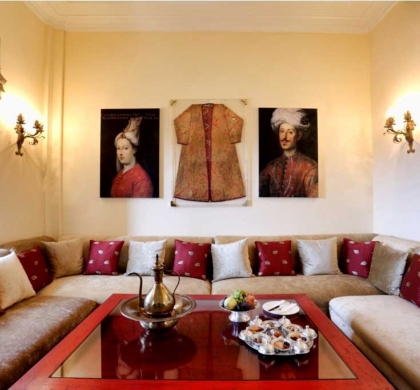Buy or gift a stand-alone digital subscription and get unlimited access to dozens of back issues for just £18.99 / $18.99 a year.
Please register at www.exacteditions.com/digital/cornucopia with your subscriber account number or contact subscriptions@cornucopia.net
Buy a digital subscription Go to the Digital EditionThe square in front of the South Gate of the Ankara Citadel, now home to one of the best boutique hotels in the country.
Tourists love Turkey but virtually none come to Ankara. They assume it is an artificial city, chosen as capital simply for its location and built virtually from scratch. It is indeed a new city, chosen by Atatürk for its central position and given fine, if somewhat Teutonic, government buildings during the 1920s and ’30s. Since then it has suffered urban sprawl, with a current population of four million. But there is nothing new or artificial about old Ankara. This is no Turkish Brasilia.
Twice capital in antiquity – known as Ancyra under the Romans, as Angora in Ottoman times – Ankara is a neglected modern capital, still ignored by those who, when it comes to history, are in the habit of skipping adroitly from the Hittites to the New Republic. But at last a long-postponed miracle is occurring. A plethora of recent discoveries in Ulus – old Ankara – have awakened a thirst to pull together the missing threads. The Museum of Anatolian Civilisations is no longer the sole attraction: changes in and around the ancient Citadel are now complemented by boutique hotels, one of them of outstanding quality. When planning your next trip to Turkey, why not be unfashionable and start with a few days in old Ankara before carrying on north, south, east or west? You will not be disappointed.
Roman Ancyra and Ottoman Angora
Nature has given Ankara a magnificent site from which to prosper and command. Built round an extinct volcano, the city dominates a gorge through which the Ankara river, a tributary of the Sakarya, once flowed.
From the north, Byzantine walls dominate a township of dilapidated pink brick houses and red-roofed shacks clinging in painterly disorder to the rocky escarpments rising from the valley floor. From the west, knowing eyes can pick out the line of the third-century walls built to defend Ancyra, Roman capital of the province of Galatia, spreading out across a flattening hill. From the south, the medieval Muslim, Christian and Jewish quarters of Ottoman Angora and the foundations of its 17th-century walls must be imagined beneath modern Ulus. Likewise the dam that once controlled the flash flooding of the now piped river has made way for an east–west thoroughfare through the gorge.
Some 3,000 years ago Ankara was a flourishing Phrygian city, which submitted to Alexander the Great before an army of nomadic Gauls appeared around 278bc. These Celtic conquerors had lost their warlike vigour and adopted softer Anatolian ways by the time they were absorbed into the Roman empire, with Ancyra as the capital of the province of Galatia. Ancyra prospered under the early Byzantine emperors, but the great Anatolian crossroads came successively under Arab, then Seljuk, then Mongol control, before the Ottoman ascendancy after 1414. Repeated assault and reconstruction brought change again and again to its ramparts and towers.
Each regime left its mark. And each was accompanied by destruction. The town in Anatolia that Atatürk chose as his capital in 1923 was a primitive place. An early New Republican on his first visit to the new capital in 1924 describes his arrival in Angora as “through the swamp” (mosquito-infested and malarial, thanks to the confluence of the two Ankara rivers), then through “the site of the fire” (which in 1917 destroyed half the old city), reaching “a village of adobe huts and mud-brick houses, crooked streets either paved or of rough cobblestones”.
Other than the Roman Temple of Augustus and the 15th-century Hacı Bayram Mosque standing on the Phrygian acropolis, the fourth-century so-called Julian Column below them, the remains of the third-century Caracalla Baths overlooking the plain – thought to have been destroyed during the Persian occupation some five centuries later – and parts of the Roman theatre recently discovered below the Citadel’s outer walls, few pre-20th-century monuments have survived on this combustible hillside regularly devastated by fire. All that is left of the 19th-century mills and tanneries are a few Ottoman buildings that have escaped the mayoral bulldozer.

 Issue 67, December 2024
Beauty in the Wilderness
Issue 67, December 2024
Beauty in the Wilderness

Cornucopia works in partnership with the digital publishing platform Exact Editions to offer individual and institutional subscribers unlimited access to a searchable archive of fascinating back issues and every newly published issue. The digital edition of Cornucopia is available cross-platform on web, iOS and Android and offers a comprehensive search function, allowing the title’s cultural content to be delved into at the touch of a button.
Digital Subscription: £18.99 / $18.99 (1 year)
Subscribe now